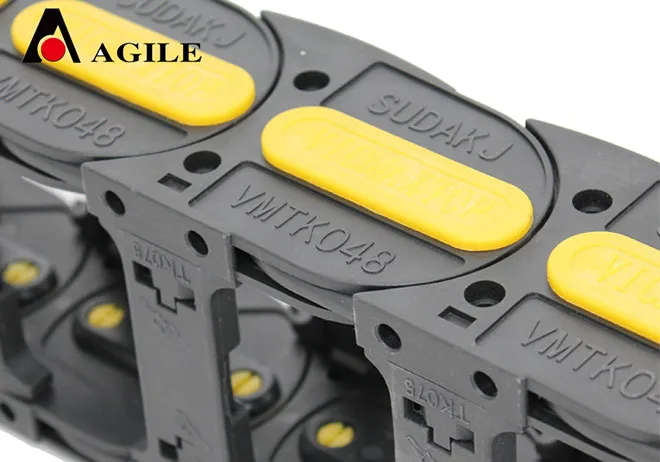Understanding CNC Drag Chains and Their Importance in Automation Systems
Understanding CNC Drag Chains A Vital Component in Modern Manufacturing
In the realm of modern manufacturing and automation, precision and efficiency are paramount. Among the various components that facilitate these goals, CNC (Computer Numerical Control) drag chains have emerged as crucial elements in the operation of CNC machines and robotic systems. They serve a fundamental purpose by managing and protecting cables and hoses that are vital for powering and controlling machinery.
What is a CNC Drag Chain?
A CNC drag chain, often known as a cable carrier, is a robust structure designed to hold and guide multiple cables, hoses, or tubes. These chains are engineered to move alongside the machinery in a predictable and organized manner, allowing unrestricted movement while minimizing wear and tear on the cables they carry.
Typically made from durable materials such as nylon, steel, or aluminum, drag chains are designed to withstand harsh operating environments. They come in various sizes and configurations, tailored to the specific needs of the machinery they serve, whether it’s milling machines, lathes, or robotic arms.
Importance of CNC Drag Chains
1. Protection and Durability One of the primary functions of drag chains is to protect essential cables from abrasion, bending, and other forms of damage caused by movement. Without such protection, cables may fray or break, leading to costly downtime and repairs.
2. Organization and Efficiency By neatly organizing cables, drag chains help to prevent tangling and chaotic setups that can arise when cables are left unmanaged. This organization not only contributes to a more orderly workspace but also allows for easier maintenance and troubleshooting.
3. Reduced Maintenance The use of drag chains can significantly reduce the need for frequent maintenance. With cables safely housed and protected, there's less likelihood of wear that necessitates ongoing replacements and repairs. This improved longevity is crucial for optimizing operational efficiency in manufacturing settings.
4. Enhanced Flexibility CNC drag chains are designed to bend and flex as machinery moves. This flexibility is essential in applications where machines require a wide range of motion. For instance, in CNC routers or plasma cutters, the drag chain needs to accommodate the dynamic movements of the machine while still maintaining the integrity of the cables.
cnc drag chain

5. Safety By preventing cables from dangling or being exposed to hazards, drag chains enhance the safety of the work environment. This reduction in loose cables minimizes the risk of tripping hazards for workers and lowers the chances of accidental damage to the equipment.
Selection Criteria for CNC Drag Chains
When choosing a drag chain, several factors need to be considered to ensure that the selected chain meets the specific needs of the application. These factors include
- Size and Length The drag chain must be appropriately sized to accommodate the number of cables or hoses it will carry while still allowing for adequate clearance for movement.
- Material The material of the drag chain impacts its durability and flexibility. For environments with extreme temperatures or exposure to chemicals, selecting the right material is critical.
- Load Capacity Understanding the weight of the cables and hoses being carried is essential for selecting a drag chain that can handle the load without risk of failure.
- Radius and Bending The design of the drag chain should allow for changes in direction without kinking or stressing the cables.
Conclusion
CNC drag chains are indispensable in today’s automated manufacturing processes. They provide protection, organization, and safety while enhancing the overall efficiency of machinery operations. As industries continue to evolve and embrace greater levels of automation, the significance of selecting the right drag chain only grows. Investing in quality drag chains can lead to improved downtime, increased productivity, and a safer operational environment, making them a critical consideration for manufacturers aiming to stay competitive in a dynamic market.








